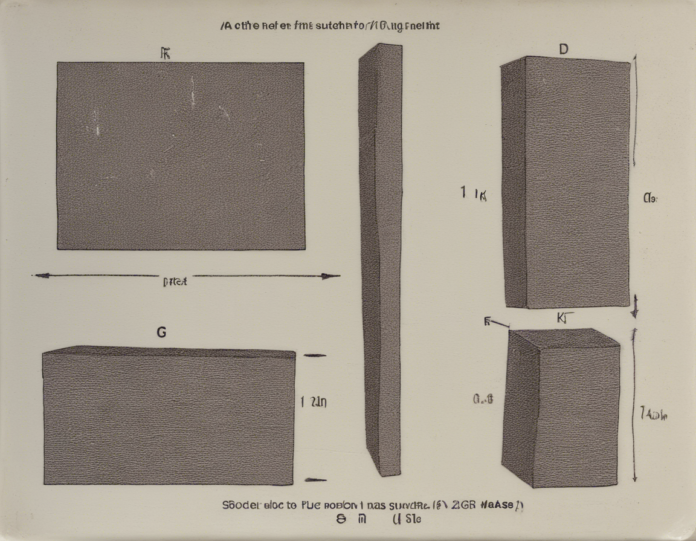Understanding the Dynamics of a 2 kg Mass Block
Introduction
Dynamics is a branch of physics that studies the relationship between motion and the forces that cause motion. In this article, we will delve into the dynamics of a 2 kg mass block. Understanding the dynamics of a mass block is crucial in various fields such as physics, engineering, and mechanics. By studying the motion, forces, and energy associated with a 2 kg mass block, we can gain insights into fundamental principles of mechanics.
Properties of a 2 kg Mass Block
Before we explore the dynamics of a 2 kg mass block, let’s establish some key properties of the block. The mass of the block is 2 kg, which refers to the amount of matter it contains. In the context of dynamics, mass plays a crucial role in determining how an object responds to external forces. The weight of the mass block can be calculated using the formula weight = mass x gravity, where gravity is approximately 9.81 m/s^2 on Earth.
Forces Acting on a 2 kg Mass Block
In the study of dynamics, various forces can act on a mass block. These forces influence the motion and equilibrium of the block. Some of the forces that may act on a 2 kg mass block include:
-
Gravity: The force of gravity, represented by Fg, always acts downward towards the center of the Earth. For a 2 kg mass block on Earth, the force of gravity can be calculated as Fg = mass x gravity.
-
Normal Force: When a mass block rests on a surface, the surface exerts a normal force, represented by Fn, perpendicular to the surface. The normal force counteracts the force of gravity to maintain equilibrium.
-
Frictional Force: If the mass block slides on a surface, a frictional force, represented by Ff, opposes the motion of the block. The magnitude of the frictional force depends on the nature of the surfaces in contact.
-
Applied Force: An external force applied to the mass block can cause it to accelerate or decelerate. The applied force, represented by Fa, influences the motion of the block.
Equations of Motion for a 2 kg Mass Block
To describe the dynamics of a 2 kg mass block, we can use Newton’s second law of motion, which states that the acceleration of an object is directly proportional to the net force acting on it and inversely proportional to its mass. The equation can be expressed as:
ΣF = ma
Where:
– ΣF is the net force acting on the block,
– m is the mass of the block (2 kg in this case), and
– a is the acceleration of the block.
By analyzing the forces acting on the mass block and applying Newton’s second law, we can determine the acceleration of the block in different scenarios. Understanding the relationship between forces and motion is essential in predicting the behavior of the mass block under various conditions.
Examples of Dynamics of a 2 kg Mass Block
Let’s consider a few scenarios to illustrate the dynamics of a 2 kg mass block:
-
Static Equilibrium: When the mass block is at rest on a horizontal surface, the net force acting on it is zero. The normal force equals the force of gravity, and there is no acceleration.
-
Accelerated Motion: If a constant applied force is exerted on the mass block, it will accelerate according to the equation of motion. The acceleration of the block depends on the magnitude of the applied force and the frictional force opposing it.
-
Inclined Plane: When the mass block is placed on an inclined plane, the forces acting on it change. The component of the force of gravity parallel to the incline affects the acceleration of the block along the plane.
Energy Considerations for a 2 kg Mass Block
In addition to forces and motion, energy considerations are crucial in understanding the dynamics of a 2 kg mass block. Two main forms of energy are relevant in dynamics:
-
Kinetic Energy: When the mass block is in motion, it possesses kinetic energy due to its velocity. The kinetic energy of the block can be calculated using the equation KE = 0.5 x mass x velocity^2.
-
Potential Energy: If the mass block is positioned at a height above the ground, it has potential energy due to gravity. The potential energy of the block can be expressed as PE = mass x gravity x height.
By analyzing the interplay between kinetic and potential energy, we can gain a comprehensive understanding of the energy dynamics of the 2 kg mass block in various situations.
Applications of Dynamics in Real-World Scenarios
The principles of dynamics are applied in various real-world scenarios, such as:
-
Mechanical Engineering: Engineers use dynamics principles to design machines, structures, and systems that operate efficiently and safely.
-
Physics Experiments: Researchers conduct experiments to study the motion of objects and validate theoretical models based on dynamics principles.
-
Vehicle Dynamics: The dynamics of vehicles, including cars, airplanes, and spacecraft, are crucial for optimizing performance and stability.
-
Robotics: Dynamic models are essential for programming robots to perform tasks effectively and navigate their environments.
Frequently Asked Questions (FAQs)
- What is the significance of mass in dynamics?
-
Mass influences how an object responds to forces, with heavier objects requiring more force to accelerate.
-
How does friction impact the motion of a mass block?
-
Frictional forces can oppose the motion of a block, affecting its acceleration and equilibrium on surfaces.
-
Can a 2 kg mass block have potential energy?
-
Yes, if the block is lifted to a height above the ground, it gains potential energy due to gravity.
-
What role does acceleration play in the dynamics of a mass block?
-
Acceleration indicates how the velocity of a mass block changes over time in response to applied forces.
-
How do dynamics principles apply to objects on inclined planes?
- Forces along the incline affect the acceleration and motion of objects on inclined planes, requiring adjustments in calculations.
In conclusion, the dynamics of a 2 kg mass block involve analyzing forces, motion, and energy interactions to predict its behavior in various scenarios. By applying fundamental principles of dynamics, we can gain insights into the physical world and practical applications in engineering and science.









